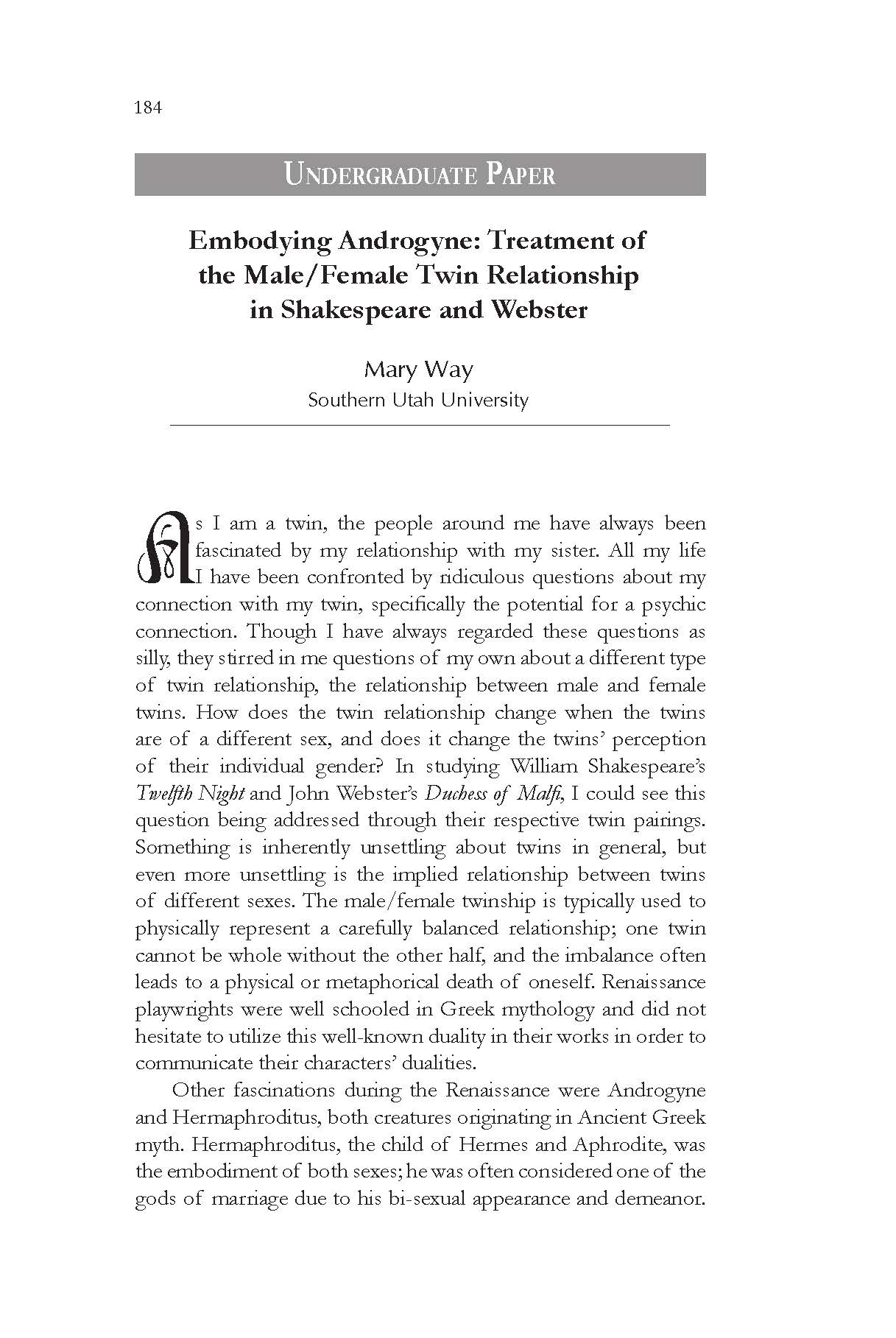Embodying Androgyne: Treatment of the Male/Female Twin Relationship in Shakespeare and Webster
Main Article Content
Abstract
As I am a twin, the people around me have always been fascinated by my relationship with my sister. All my life I have been confronted by ridiculous questions about my connection with my twin, specifically the potential for a psychic connection. Though I have always regarded these questions as silly, they stirred in me questions of my own about a different type of twin relationship, the relationship between male and female twins. How does the twin relationship change when the twins are of a different sex, and does it change the twins’ perception of their individual gender? In studying William Shakespeare’s Twelfth Night and John Webster’s Duchess of Malfi, I could see this question being addressed through their respective twin pairings. Something is inherently unsettling about twins in general, but even more unsettling is the implied relationship between twins of different sexes. The male/female twinship is typically used to physically represent a carefully balanced relationship; one twin cannot be whole without the other half, and the imbalance often leads to a physical or metaphorical death of oneself. Renaissance playwrights were well schooled in Greek mythology and did not hesitate to utilize this well-known duality in their works in order to communicate their characters’ dualities.
